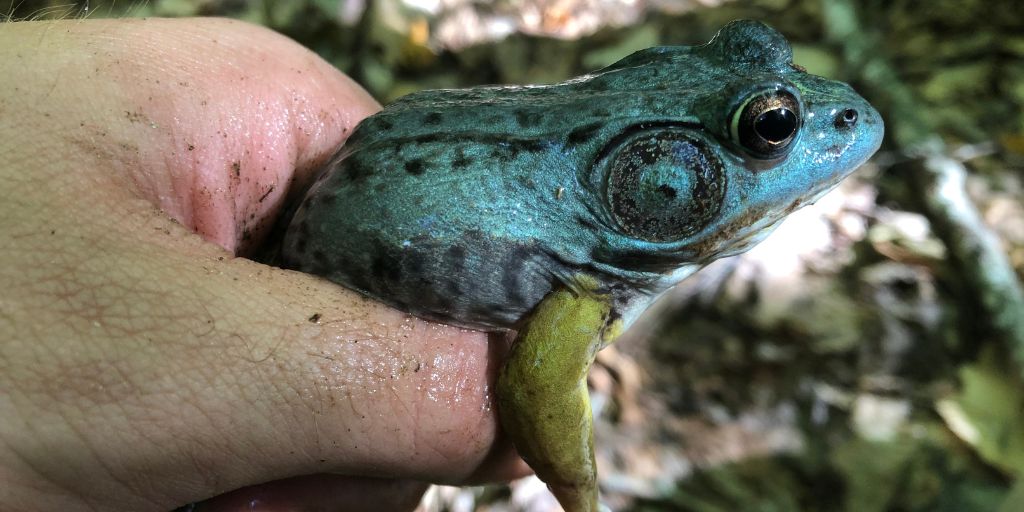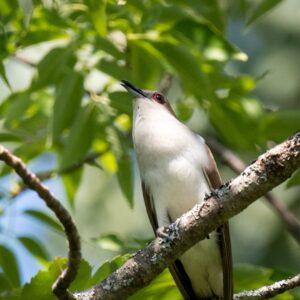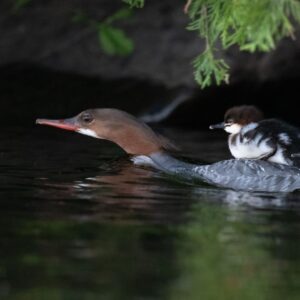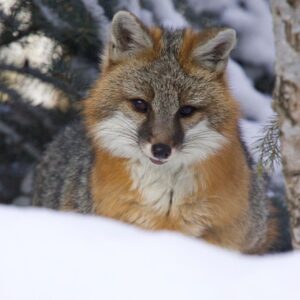Nature Notes: A Maine Naturalist Afield

Host: Logan Parker
Producer: Glen Mittelhauser
This piece is a reflection on the ecological stirrings of early spring, centered on the thaw and renewal of a small brook. As the snowmelt surges through the brook, it awakens a vibrant world of birds, amphibians, and aquatic life, offering a fleeting season of beauty before the forest fully leafs out.
Transcript
There’s something special about those first few weeks of spring.
After months of relatively suspended animation, locked in ice and buried beneath the snow, the landscape takes again a lively form. Every day, another species of bird returns or else passes on further north. At first light, the Pine Warblers sing from the highest boughs while Winter Wrens scold from the understory. By midday, it’s the clumsy tapping of sapsuckers that permeates through the maples, beeches, and birches. Evening is reserved for the twittering sky dances of the American Woodcock on the woods’ margins.
There’s another sound, however, which dominates this season within a season in our house clearing– a steady hum when heard from within our house, it is a persistent rush (sometimes a roar) when standing on the doorstep. The Brown Brook is free to charge its way past our home, situated between two beaver flowages, before it joins the Sheepscot on its journey to the sea. This brook played a large role in our choosing this location for our homesite.
I have been drawn to the edge of this narrow waterway on more occasions than I can count over the years, whether to follow its wind down the valley or else to examine the activities of its inhabitants. Early spring, in the weeks following the primary snow melt, is the most dramatic period for this waterway. While all the woods are still mostly bare, festooned only in the dull and tattered trappings of last year’s growth, the willowmosses and stippleback lichens within the stream seem to radiate a verdant, green glow from within the rushing waters. This period between ice out and leaf out is the golden hour of these aquatic photosynthesizers.
Throughout much of the year, the brook can be crossed with a bound or else by carefully picking a path over the slippery, rounded stones. During these weeks, however, the brook can swell in size such that any fording would require a stout-legged trudge through ice-cold, waist-deep meltwater. I’ve seen some sections of the brook expand its surface area to more than 15 feet when heavy rains mix with melting snow and ice. These events sometimes carry Redbelly Dace and other small fish over the beaver dam from the impounded pond uphill. As the water levels drop, these minnows sometimes become stranded in the brook’s deeper pools.
Insects are among the most commonly encountered lifeforms in Brown Brook. As soon as the ice is out, water striders take to the water surface, patrolling calmer sections for food on their densely haired, water-repellant feet. Below the surface, diving beetles paddle over the streambed of stones and pale leaf litter. Caddisfly larvae can often be found creeping along this substrate, largely concealed within their mobile homes cobbled together from gravel, sand, and bits of plant material. Overturning a stone will sometimes reveal the grub-like larval forms of craneflies. I’m still astonished that something so delicate starts its life in such a plump, fleshy form.
Overturning stones is also a great means of getting acquainted with the brook’s resident salamanders. Northern Two-lined Salamanders are the most common though you don’t see them for long. Slender and energetic, they will dart for cover immediately upon discovery using their paddle-like tails to propel themselves through the water. By contrast, the brook’s other resident salamander, the Northern Dusky Salamander, has a flat appearance and is generally slow-moving when discovered. After passing the winter, presumably buried within the gravel, these salamanders take shelter beneath the widest, flattest stones.
Frogs are also regulars within Brown Brook, with Green Frogs being the most commonly encountered species. They are often perched atop the damp bank or else submerged in the shallows in the wider sections of the brook. I once found an axanthic Green Frog hopping along the streambed. A genetic mutation had rendered this “green” frog’s skin bright blue, the result of altered xanthophores and carotenoid vesicles that inhibited the production of yellow pigments in the frog’s skin.
As the spring wears on, the rush of the brook is lulled into a less hasty and babbling flow. Delicate wildflowers bloom and ferns unfurl along its edges as the calm sets in and birdsong becomes the prevailing soundscape in the surrounding woodlands. And while its murmurings can still be heard from the doorstep, its spring vigor has passed, carried off down into the valley until the cycle begins anew.
Related Episodes
-
12/1/24: Clock-work
Maine’s cuckoos are among the most secretive birds to breed within our woodlands. Here we explore their fascinating natural history through the lens of field observations.
-
7/27/25: The Hunt for the Red-breasted Merganser, part 3
The final opportunity to document breeding Red-breasted Mergansers arrives, but events take an unexpected turn with the shifting of the wind.
-
3/9/25: The Tree Fox
Learn about the elusive Gray Fox with Logan Parker.
Related Episodes
-

7/27/25: The Hunt for the Red-breasted Merganser, part 3
The final opportunity to document breeding Red-breasted Mergansers arrives, but events take an unexpected turn with the shifting of…
-

12/15/24: Jay Mimicry
Is that truly a hawk you hear? Learn the deceptive tactics jays employ to secure their share of the…
-

12/1/24: Clock-work
Maine’s cuckoos are among the most secretive birds to breed within our woodlands. Here we explore their fascinating natural…






